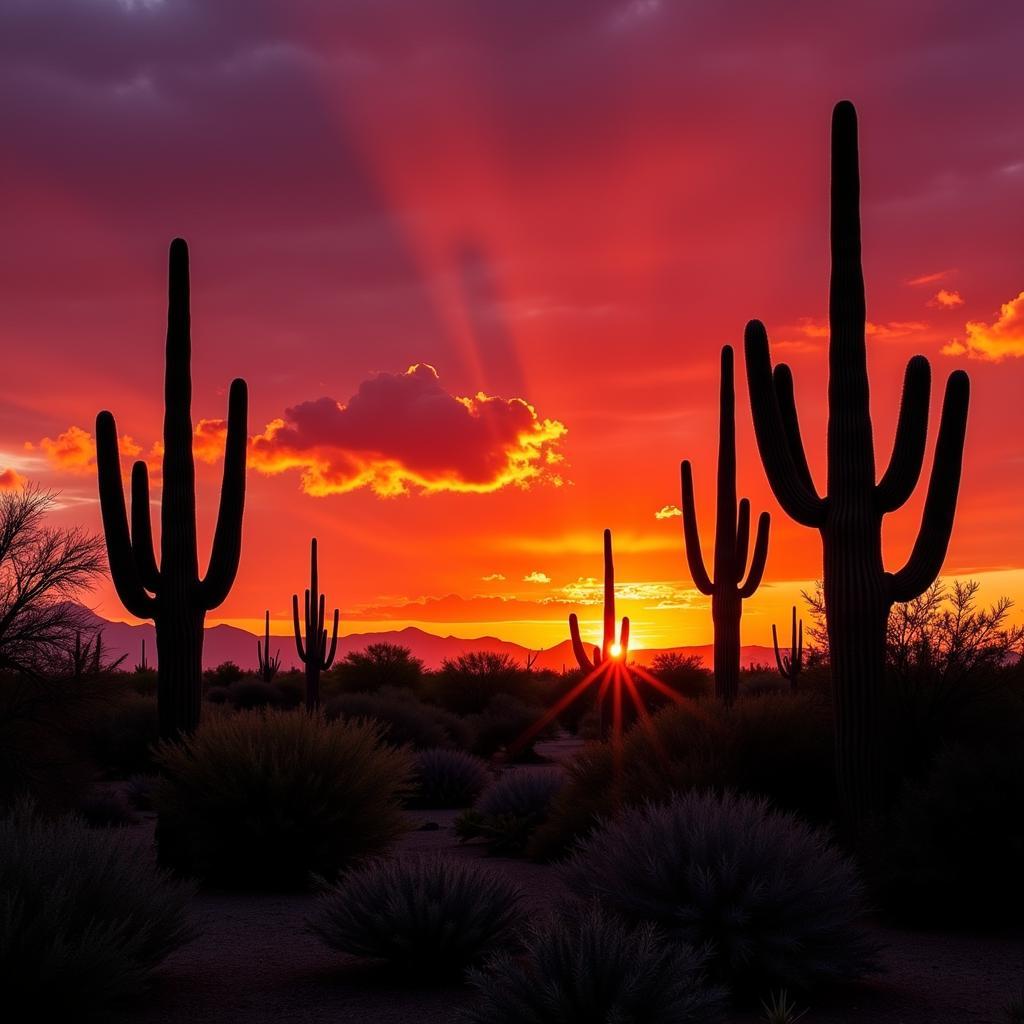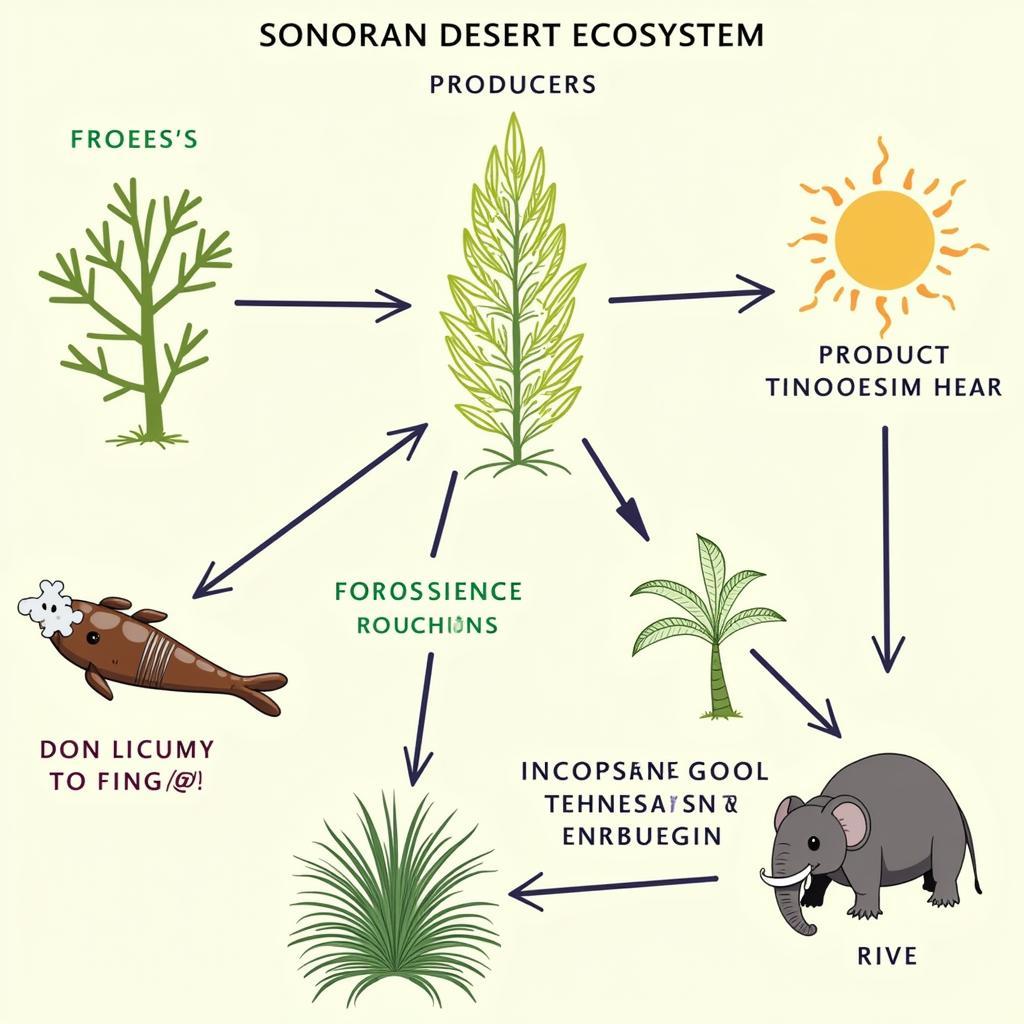The Sonoran Desert, a land of scorching sun and scarce rainfall, might seem an unlikely place to find a thriving ecosystem. Yet, beneath the unforgiving exterior lies a complex and fascinating network of life known as the Sonoran Food Web. This intricate system, shaped by millennia of adaptation and resilience, connects every living organism from the tiniest insect to the towering saguaro cactus.
 A panoramic view of the Sonoran Desert landscape
A panoramic view of the Sonoran Desert landscape
A Closer Look at the Players
The Sonoran food web, like all food webs, consists of producers, consumers, and decomposers. Producers form the foundation, harnessing energy from the sun to create their own food. In the Sonoran Desert, these primary producers are often drought-tolerant plants like cacti, shrubs, and grasses. These plants, in turn, become a vital food source for herbivores, the primary consumers.
 A desert tortoise grazing on a prickly pear cactus
A desert tortoise grazing on a prickly pear cactus
A Web of Interdependence
The story doesn’t end there. The Sonoran food web is a complex tapestry of interconnected relationships. Herbivores, ranging from jackrabbits and packrats to desert tortoises and insects, become prey for secondary consumers like coyotes, bobcats, and rattlesnakes. These predators, in turn, can become food for larger predators like mountain lions, forming the apex of the food web.
Each organism, no matter how small or seemingly insignificant, plays a crucial role in maintaining the delicate balance of this ecosystem.
The Decomposers: Nature’s Recyclers
While often overlooked, decomposers are essential to the Sonoran food web. These organisms, primarily bacteria and fungi, break down dead plants and animals, returning vital nutrients to the soil. This process of decomposition enriches the soil, allowing for new plant growth and continuing the cycle of life.
 A simplified diagram illustrating the Sonoran Desert food web
A simplified diagram illustrating the Sonoran Desert food web
The Impact of Human Activity
Human activity, however, has had a profound impact on the Sonoran food web. Habitat loss due to urbanization and agriculture, along with the introduction of invasive species, has disrupted the delicate balance of this ecosystem. Understanding the complexities of the Sonoran food web is crucial for developing effective conservation strategies that protect this unique and valuable environment.
Conclusion: Protecting a Fragile Balance
The Sonoran food web, a testament to nature’s resilience and adaptability, is a delicate system facing increasing pressure. By understanding the interconnectedness of life within this unique environment and the impact of human activities, we can work towards ensuring the long-term health and survival of this remarkable ecosystem.